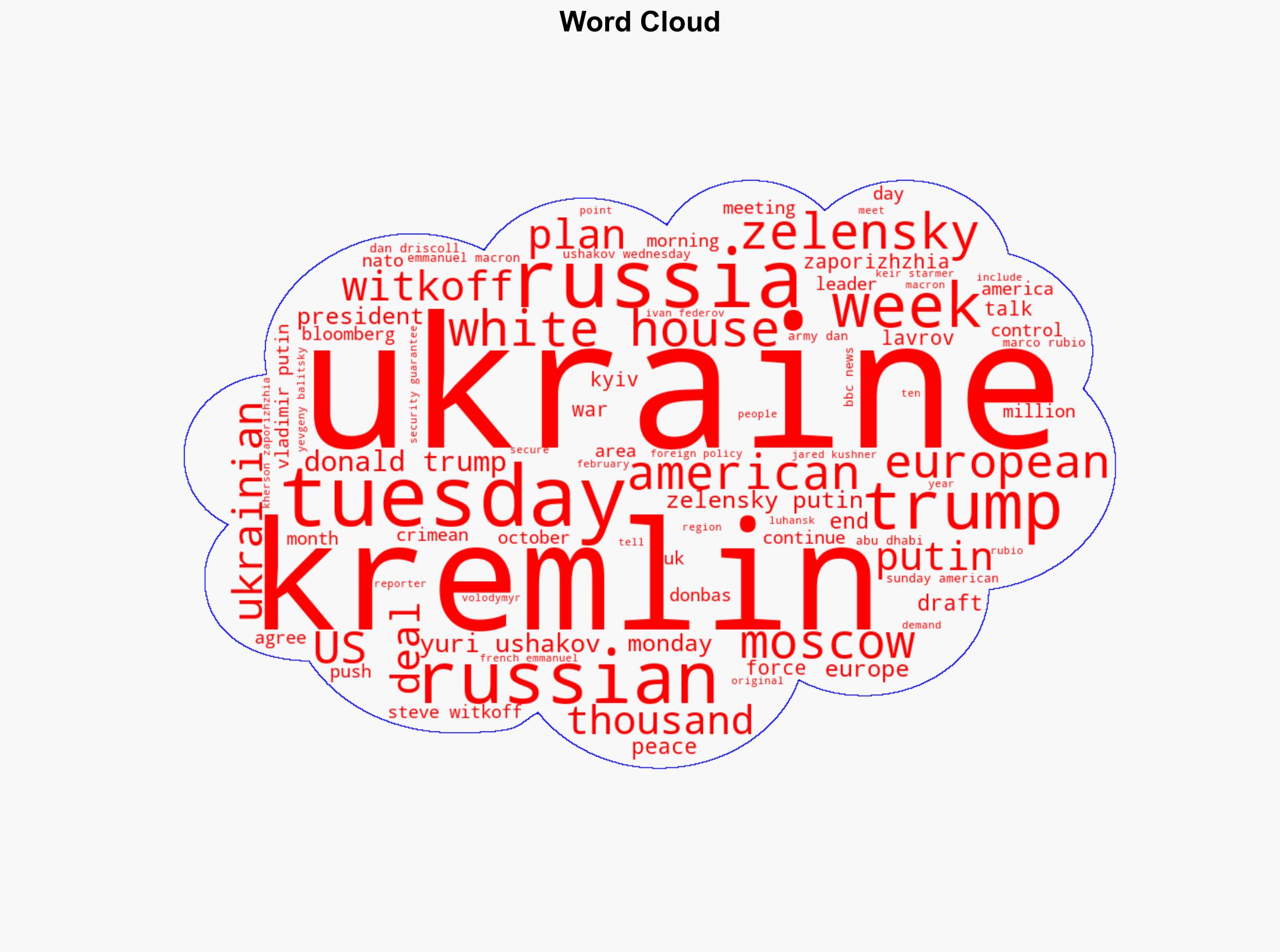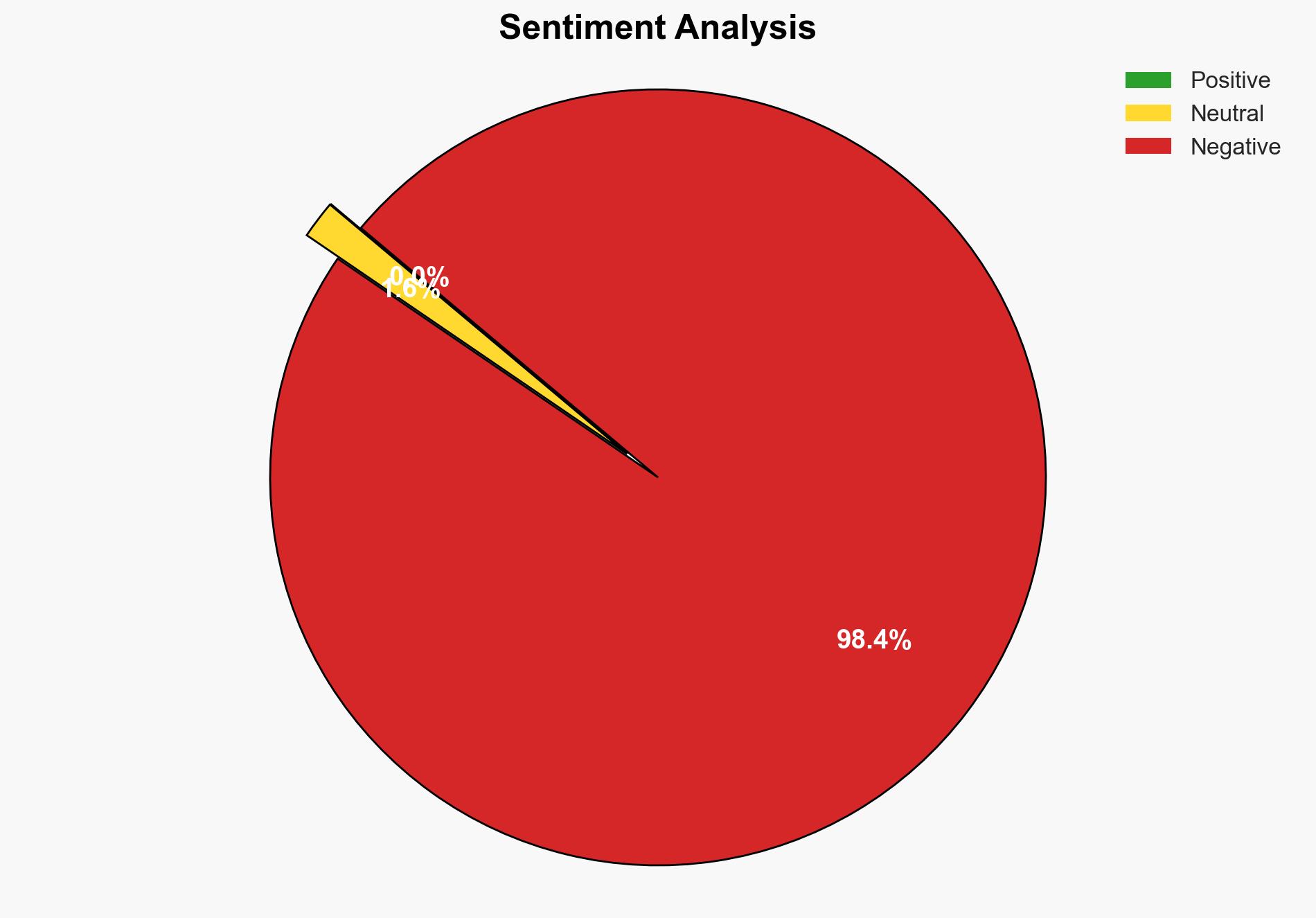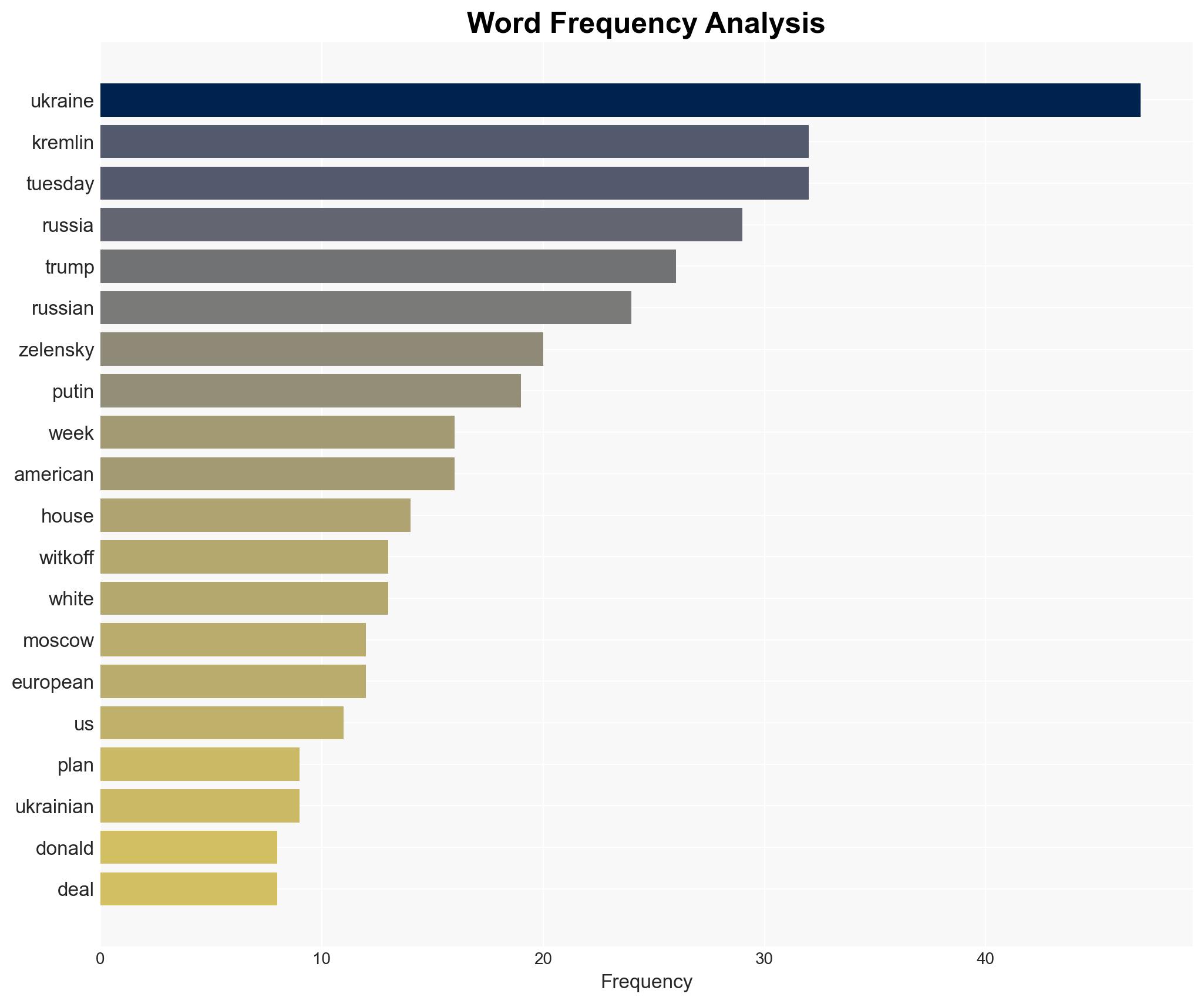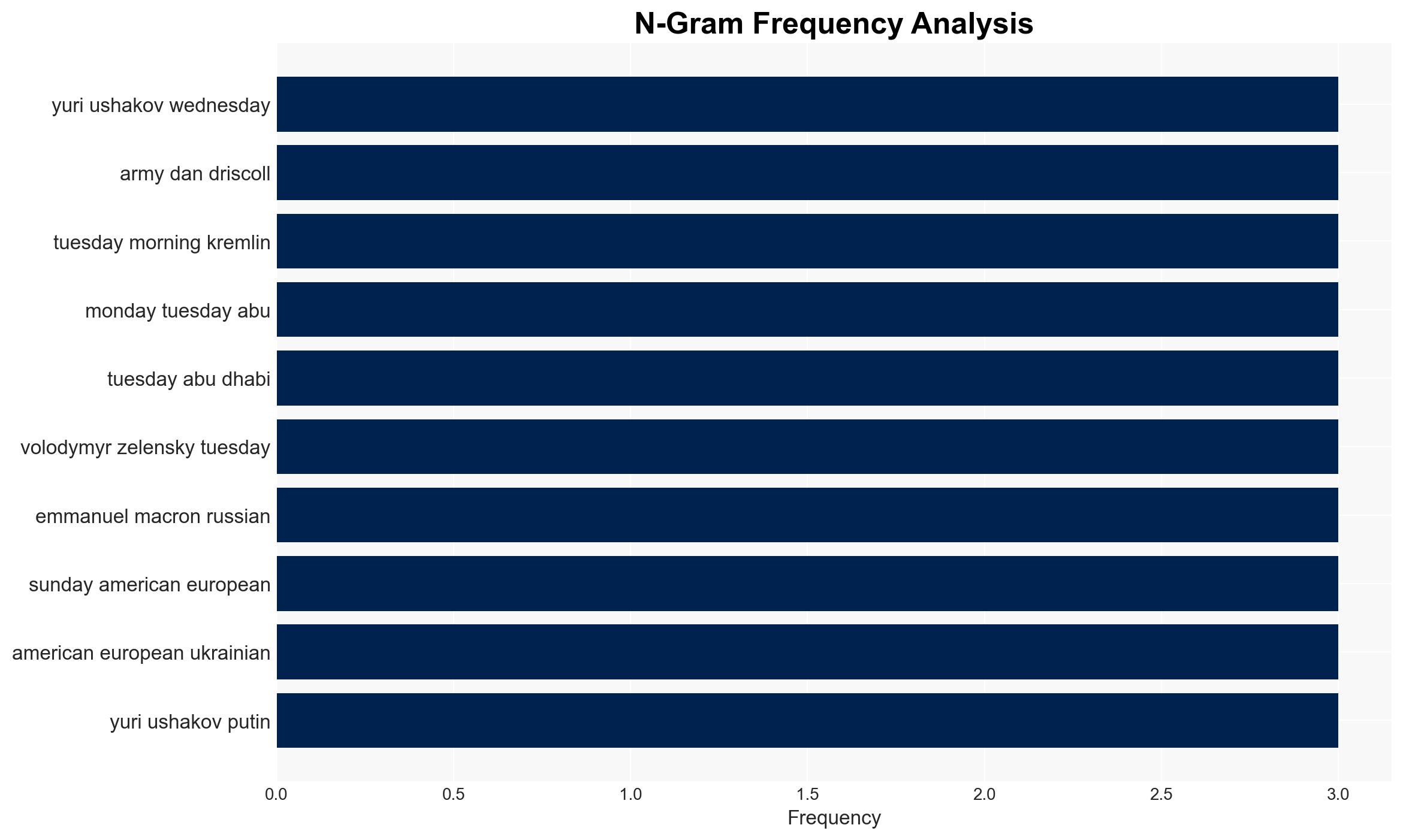Russia and Ukraine trade deadly strikes overnight
Published on: 2025-11-25
AI-powered OSINT brief from verified open sources. Automated NLP signal extraction with human verification. See our Methodology and Why WorldWideWatchers.
Intelligence Report:
1. BLUF (Bottom Line Up Front)
The most supported hypothesis is that the peace talks between Russia and Ukraine, facilitated by U.S. envoy Steve Witkoff, are unlikely to result in a lasting agreement due to fundamental disagreements on territorial concessions and security guarantees. Confidence Level: Moderate. Recommended action includes diplomatic engagement with European allies to ensure cohesive support for Ukraine and preparation for potential escalation scenarios.
2. Competing Hypotheses
Hypothesis 1: The peace talks will lead to a comprehensive agreement that ends the conflict. This hypothesis is supported by the involvement of high-level officials and the urgency expressed by both U.S. and Russian representatives.
Hypothesis 2: The peace talks will fail to produce a lasting agreement due to irreconcilable differences over territorial concessions and security guarantees. This hypothesis is supported by historical precedent, the complexity of the issues at hand, and skepticism from European leaders.
Hypothesis 2 is more likely due to the entrenched positions on both sides, particularly regarding territorial integrity and security arrangements, which have historically been sticking points in negotiations.
3. Key Assumptions and Red Flags
Assumptions: It is assumed that both parties are negotiating in good faith and that external pressures will not derail the talks.
Red Flags: The lack of public acknowledgment of Russia’s concerns by American officials and the skepticism expressed by European leaders suggest potential misalignment and lack of consensus.
Deception Indicators: The possibility that Russia may use the talks to buy time or to create divisions among Western allies should be considered.
4. Implications and Strategic Risks
The failure of peace talks could lead to renewed hostilities, increased regional instability, and further economic sanctions against Russia. Escalation scenarios include cyberattacks, disinformation campaigns, and potential military confrontations. Politically, a breakdown in talks could strain U.S.-European relations and undermine NATO cohesion.
5. Recommendations and Outlook
- Engage in continuous diplomatic efforts with European allies to maintain a unified stance on Ukraine.
- Prepare contingency plans for potential escalation, including cyber defense and economic sanctions.
- Best-case scenario: A partial agreement that leads to a temporary ceasefire.
- Worst-case scenario: Breakdown of talks leading to intensified conflict and regional instability.
- Most-likely scenario: Ongoing negotiations with intermittent progress but no comprehensive agreement.
6. Key Individuals and Entities
Steve Witkoff, Vladimir Putin, Yuri Ushakov, Dan Driscoll, Volodymyr Zelensky, Donald Trump, Sergei Lavrov, Emmanuel Macron, Keir Starmer, Marco Rubio.
7. Thematic Tags
Regional Focus, Regional Focus: Eastern Europe, Russia-Ukraine Conflict, International Diplomacy
Structured Analytic Techniques Applied
- Causal Layered Analysis (CLA): Analyze events across surface happenings, systems, worldviews, and myths.
- Cross-Impact Simulation: Model ripple effects across neighboring states, conflicts, or economic dependencies.
- Scenario Generation: Explore divergent futures under varying assumptions to identify plausible paths.
Explore more:
Regional Focus Briefs ·
Daily Summary ·
Support us





